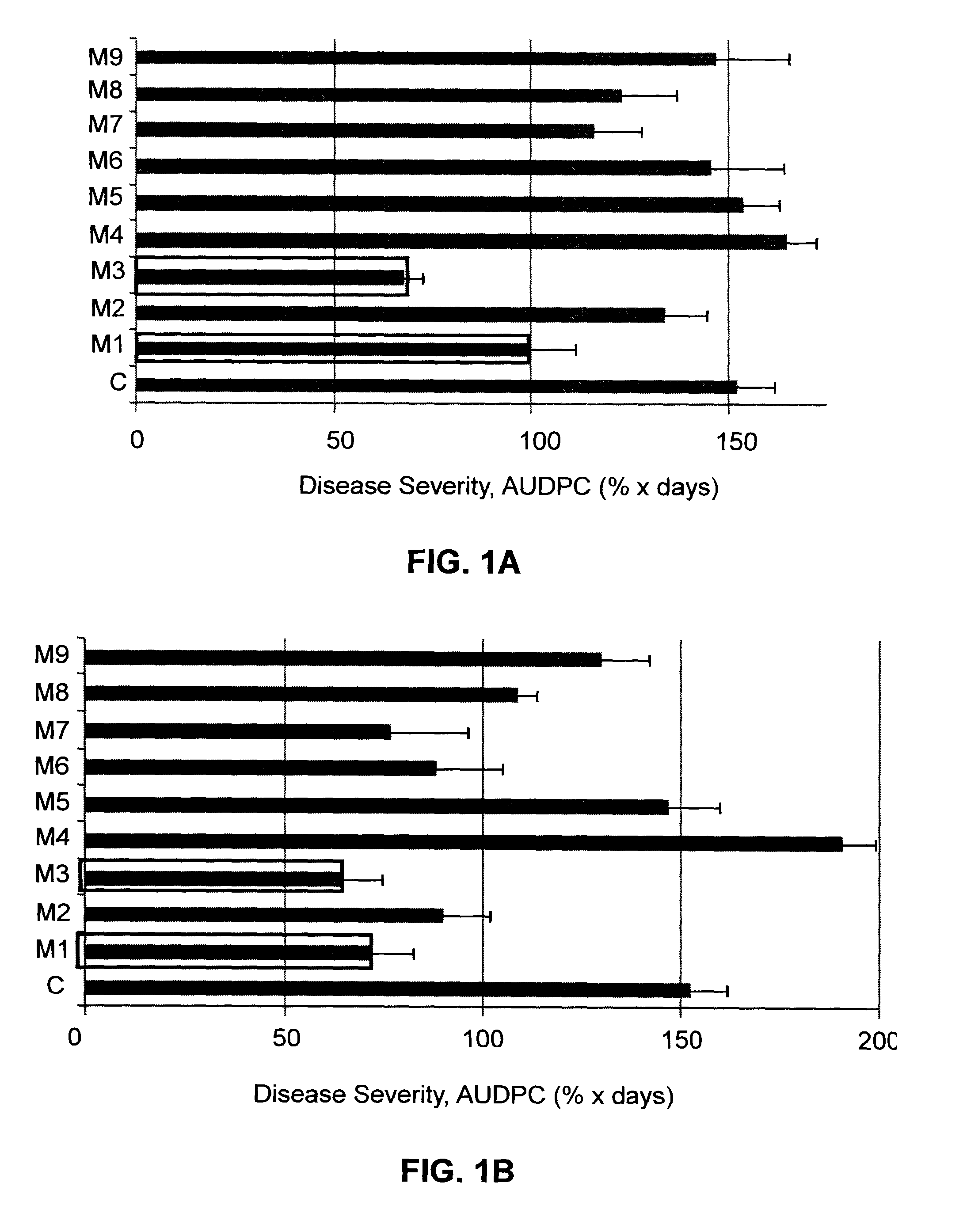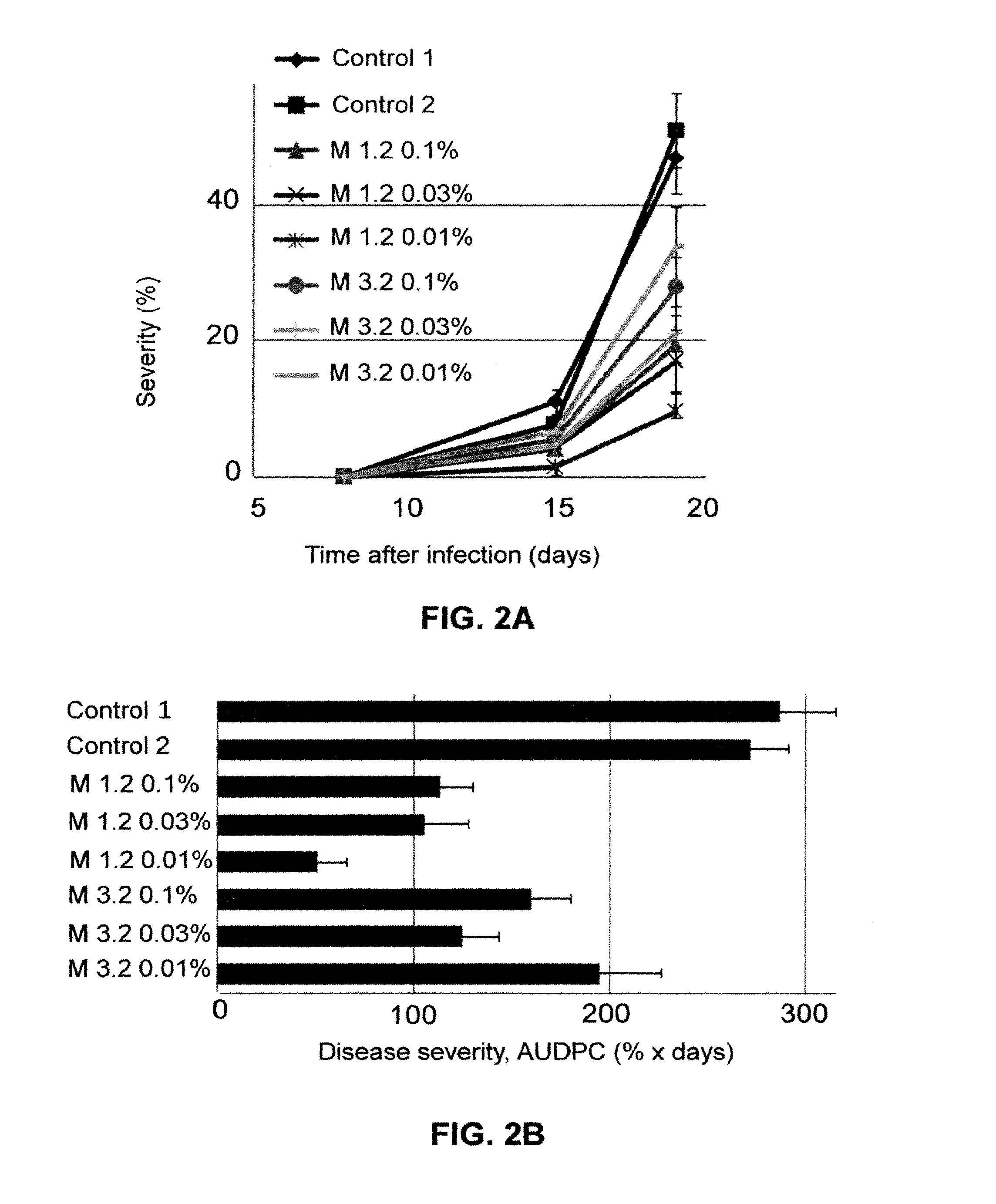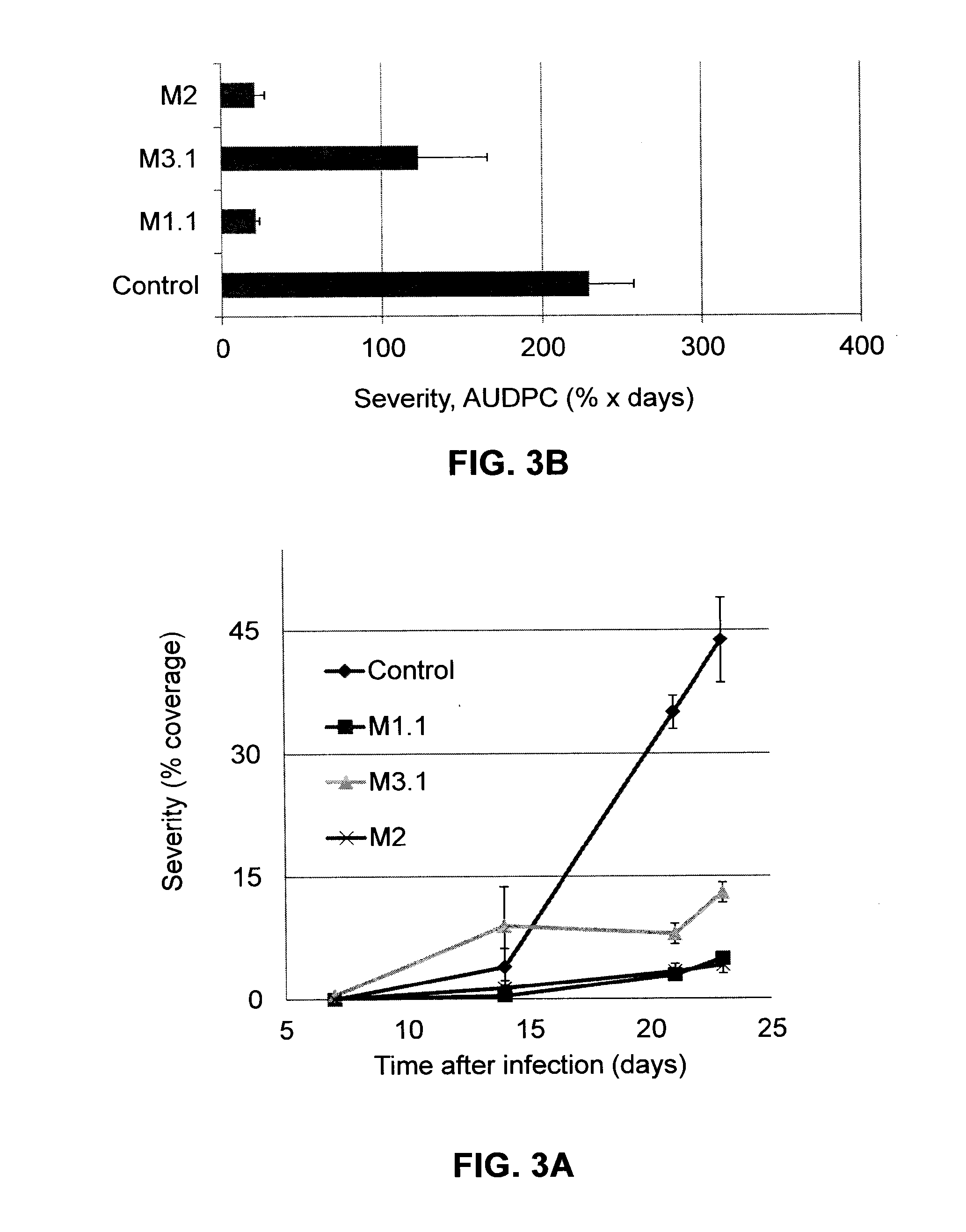Melanoidins and their use for improving properties of plants
a technology of melanoidins and plants, applied in the field of melanoidins and their use for improving the properties of plants, can solve the problems of reducing water-use efficiency, no effective solution for controlling the diseases of affected plants, and serious damage to a wide range of plants, so as to improve the drought tolerance of plants, improve plant growth, and improve plant resistance to plant diseases.
- Summary
- Abstract
- Description
- Claims
- Application Information
AI Technical Summary
Benefits of technology
Problems solved by technology
Method used
Image
Examples
example 1
Effect of Various Solutions of Melanoidins on Gray Mold Severity in Botrytis cinerea Infected Tomato Plants
[0140]Plants were infected by Botrytis cinerea suspension (as described in the “Materials and Methods” section) 25 days after planting. Solutions of various melanoidin types (see table 1 for key) at 0.1% (0.1 g melanoidins per 100 ml) were either sprayed or drenched twice, 3 days and 1 hour before infection. Severity of the disease was evaluated 11 days following infection and incubation at high humidity conditions.
[0141]It was found that sprayed solutions M1-M3 and M6-M8 on the tomato plants were effective in decreasing the disease severity. Application by drench with the solutions M1 and M3 was superior in disease suppression as compared with other solutions (FIG. 1).
example 2
Effect of Spray of Solutions of Various Melanoidin Types on Powdery Mildew Severity in Oidium neolycopersici Infected Tomato Plants
[0142]Tomato plants were infected by Oidium neolycopersici (as indicated in the “Materials and Methods” section) 33 days after planting. The plants were treated twice by spray of 0.1% melanoidins (See Table 1 for key) solutions 3 days and 1 hour before infection. Evaluation of tomato powdery mildew severity was carried out through 19 days after infection.
[0143]It was found that spraying with 0.1% of various melanoidins suppressed tomato powdery mildew (FIG. 2).
example 3
Effect of Solutions of Various Melanoidin Types Applied by Spray and by Drench on Powdery Mildew Severity in Oidium neolycopersici Infected Tomato Plants
[0144]Tomato plants were infected by Oidium neolycopersici 35 days after planting. The plants were treated by drench or by spray of 0.1% melanoidin solutions (see Table 1 for key) 3 days and 1 hour before infection. Evaluation of tomato powdery mildew severity was carried out through 23 days after infection.
[0145]It was found that spraying with 0.1% solutions of various melanoidin types suppressed tomato powdery mildew, yet M1.1 and M2 were significantly more effective.
[0146]It was also found that application by drench with 0.1% solutions of M1.1 and M3.1 suppressed tomato powdery mildew (FIG. 3).
PUM
| Property | Measurement | Unit |
|---|---|---|
| molecular weight | aaaaa | aaaaa |
| molecular weight | aaaaa | aaaaa |
| temperatures | aaaaa | aaaaa |
Abstract
Description
Claims
Application Information
 Login to View More
Login to View More - R&D
- Intellectual Property
- Life Sciences
- Materials
- Tech Scout
- Unparalleled Data Quality
- Higher Quality Content
- 60% Fewer Hallucinations
Browse by: Latest US Patents, China's latest patents, Technical Efficacy Thesaurus, Application Domain, Technology Topic, Popular Technical Reports.
© 2025 PatSnap. All rights reserved.Legal|Privacy policy|Modern Slavery Act Transparency Statement|Sitemap|About US| Contact US: help@patsnap.com



